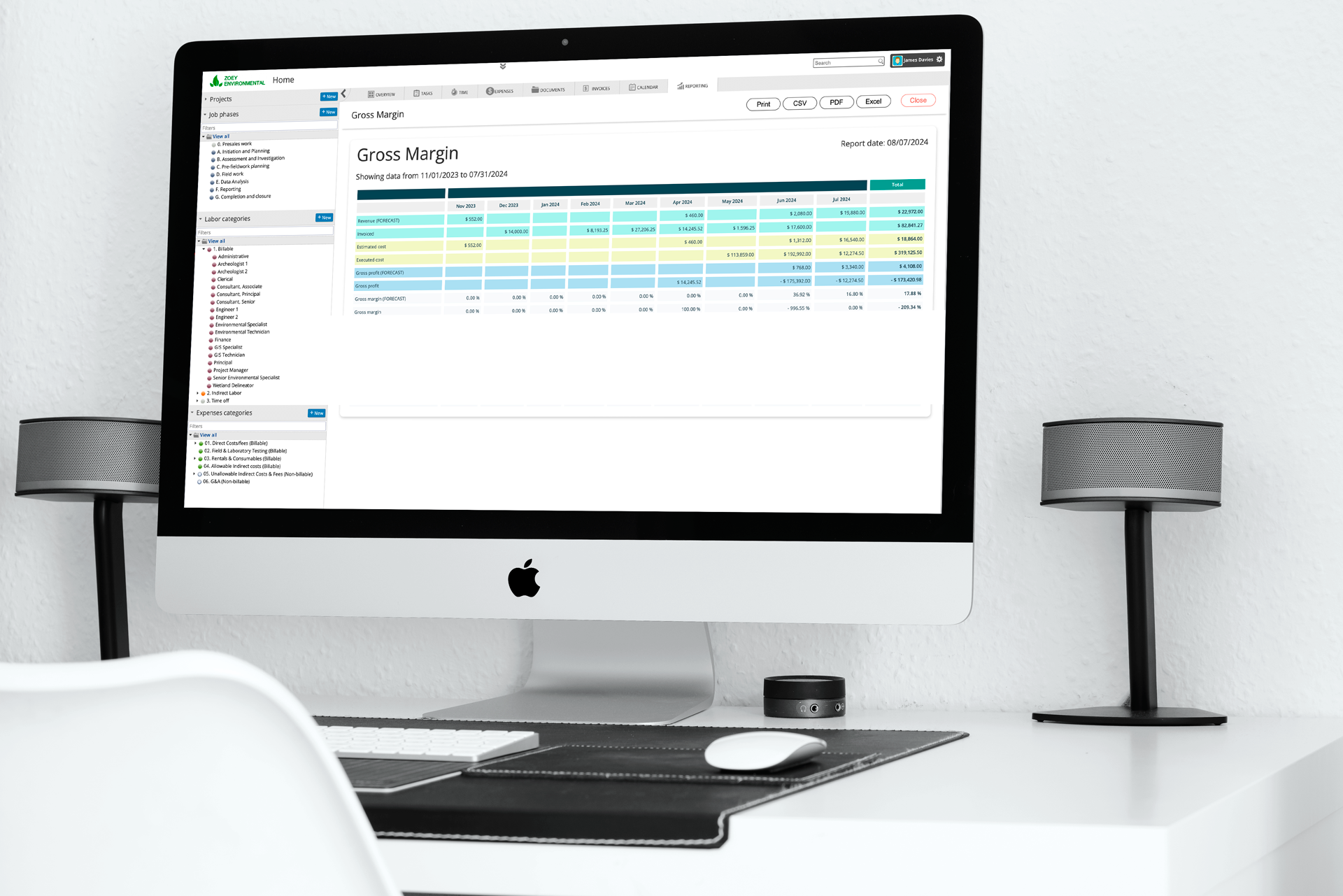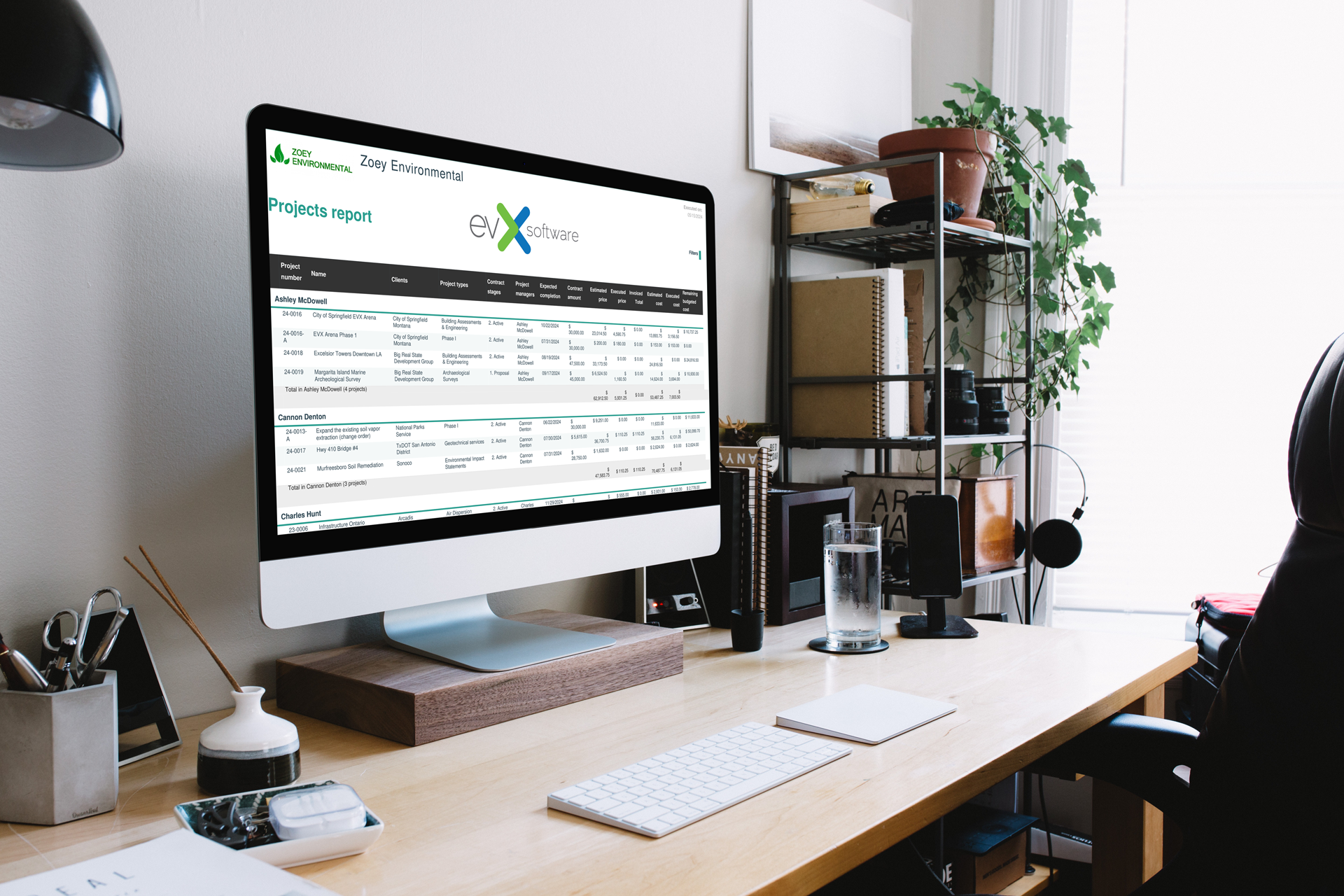Publishing date:

In Environmental Consulting and Engineering, data is everywhere, from field notes and sample logs to invoices and permit records. But data alone isn’t useful. The anatomy of good reporting lies in transforming this data into insight: understanding how your team is performing, what projects are costing, how revenue aligns with expectations, and what must be shown to clients or regulators.
You can’t afford to guess, especially in a scientific, compliance-heavy field. You need clarity. But clarity doesn’t come from spreadsheets. It comes from a system that captures your work and gives you the means to interpret it.
When you need to understand how your business is functioning, start by looking inward. A good reporting system for environmental firms should give visibility across people, budgets, and projects.
A core part of the anatomy of good reporting is internal visibility, knowing how your team, finances, and projects are functioning at any given moment.
If you don’t know how much time your team is spending on tasks, you can’t make informed staffing decisions. The Worked time by person report helps you break down time entries by employee, hour type, and service category. You can see who's overbooked, who might be underused, and how each individual contributes to the overall progress.
Compare this with the Utilization Report, which shows whether your staff is hitting time targets, and you get a full picture of productivity and workload. The goal is not to squeeze more hours from your team, but to plan realistically and avoid burnout.
You can’t run a business on intuition. You need to know where each project stands financially. That’s where the Gross Margin Report comes in. It helps you understand revenue, costs, and margins across projects. If a project that looked profitable on paper is trending negative, you can catch it early and make adjustments.
Deliverables are just the outcome. What matters more is how the project got there. The Project budget by tasks report gives you a view into executed versus budgeted time, cost, and revenue, broken down by task. That means project managers can see if timelines are slipping, if a phase is over budget, or if work was underestimated.

Another critical element in the anatomy of good reporting is communication. Reports should translate complex project data into clear, meaningful updates that build client trust. They need relevant, easy-to-read summaries that help them feel confident that the project is progressing as it should.
If your project is T&M, clients want to see where the money is going. The Project billing (T&M) report gives a complete view of time entries and expenses, grouped by project. It’s not just for billing departments; it’s a communication tool.
The Project status report shows how tasks are progressing and whether there are delays that might affect the schedule. It replaces verbal updates with real, traceable data, helping you avoid misunderstandings and scope disputes.
Clients care about outcomes, especially when the scope evolves. The Forecast vs Actuals report shows revenue progression by month, making it easier to spot deviations and discuss them before they become a problem.

The anatomy of good reporting also includes compliance. Reports must be more than operational tools; they must ensure your firm is always audit-ready and accountable.
Compliance isn’t optional. Whether it’s federal permits, local funding rules, or internal audits, Environmental firms face a constant need to document, track, and verify. But compliance doesn’t have to be a burden.
For projects under government grants or requiring close tracking of hours, the Timesheets report becomes essential. It provides a verifiable log of time entries by person and task, exactly what auditors and funding agencies expect.
Some project documents are sensitive. If you need to prove who accessed what and when, the File access/download report has you covered. It helps demonstrate information control and document review history, especially for regulated projects.
When authorities ask for labor distribution by project phase or professional category, the Customer's report delivers. It shows how work was allocated across roles and phases, making your reporting audit-ready with minimal manual effort.




400.png)
When you break it down, the anatomy of good reporting is simple: clarity, accountability, and foresight. It’s not about forms or checkboxes; it’s about making better decisions before projects go off track, showing clients measurable results, and being ready when regulators demand proof.
With EVX Software, reporting is built into the way you work. You don’t have to dig through spreadsheets or hope someone remembered to update a tracker. The data is already there, collected as you go, organized by task, person, and project, ready to be understood.
If your current system leaves you guessing or scrambling during audits, it might be time to try a better way.

Join a growing community of professionals and receive expert knowledge on Project Management and industry insights from the ONLY Software designed specifically for Environmental Consulting and Engineering firms.